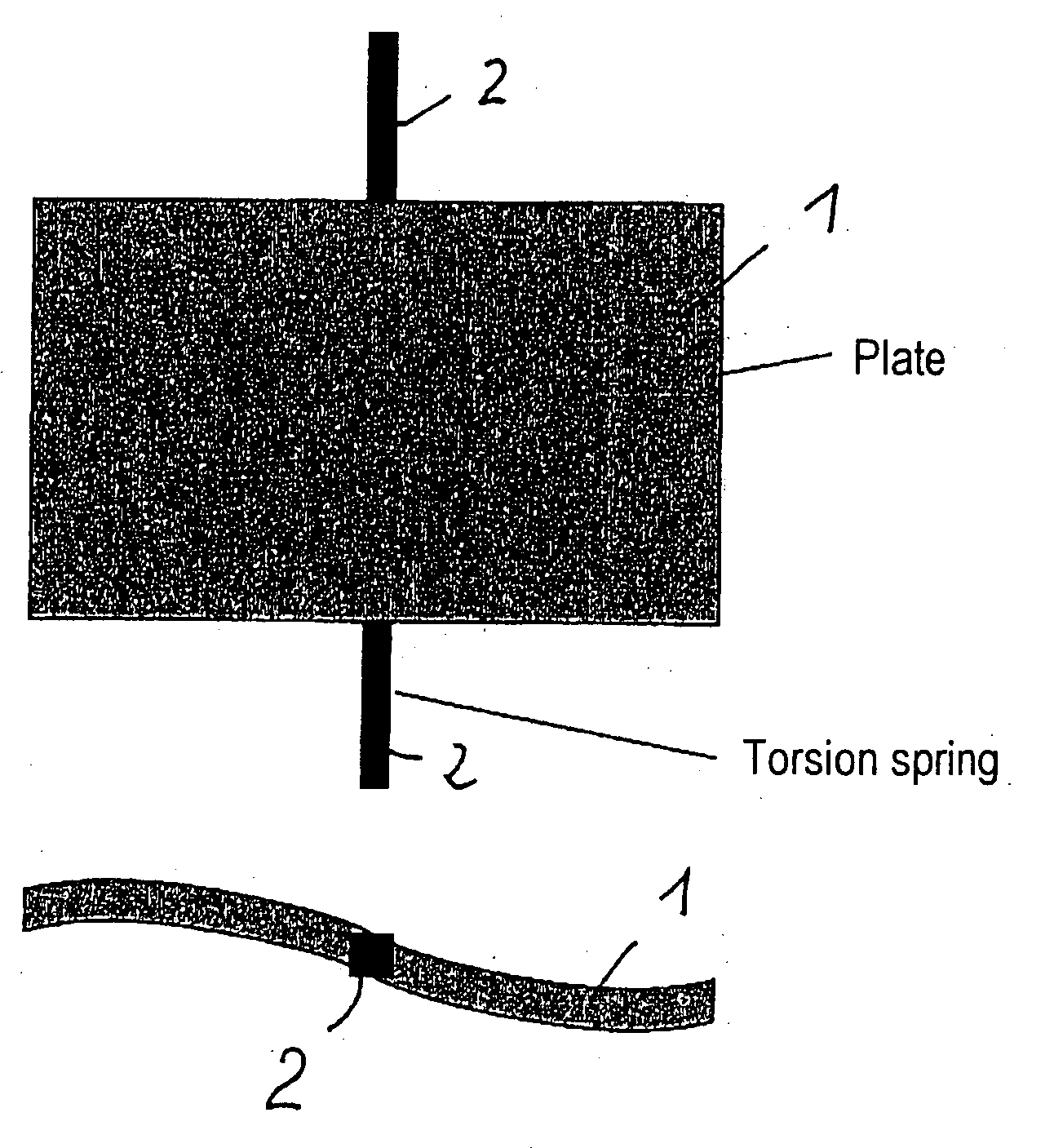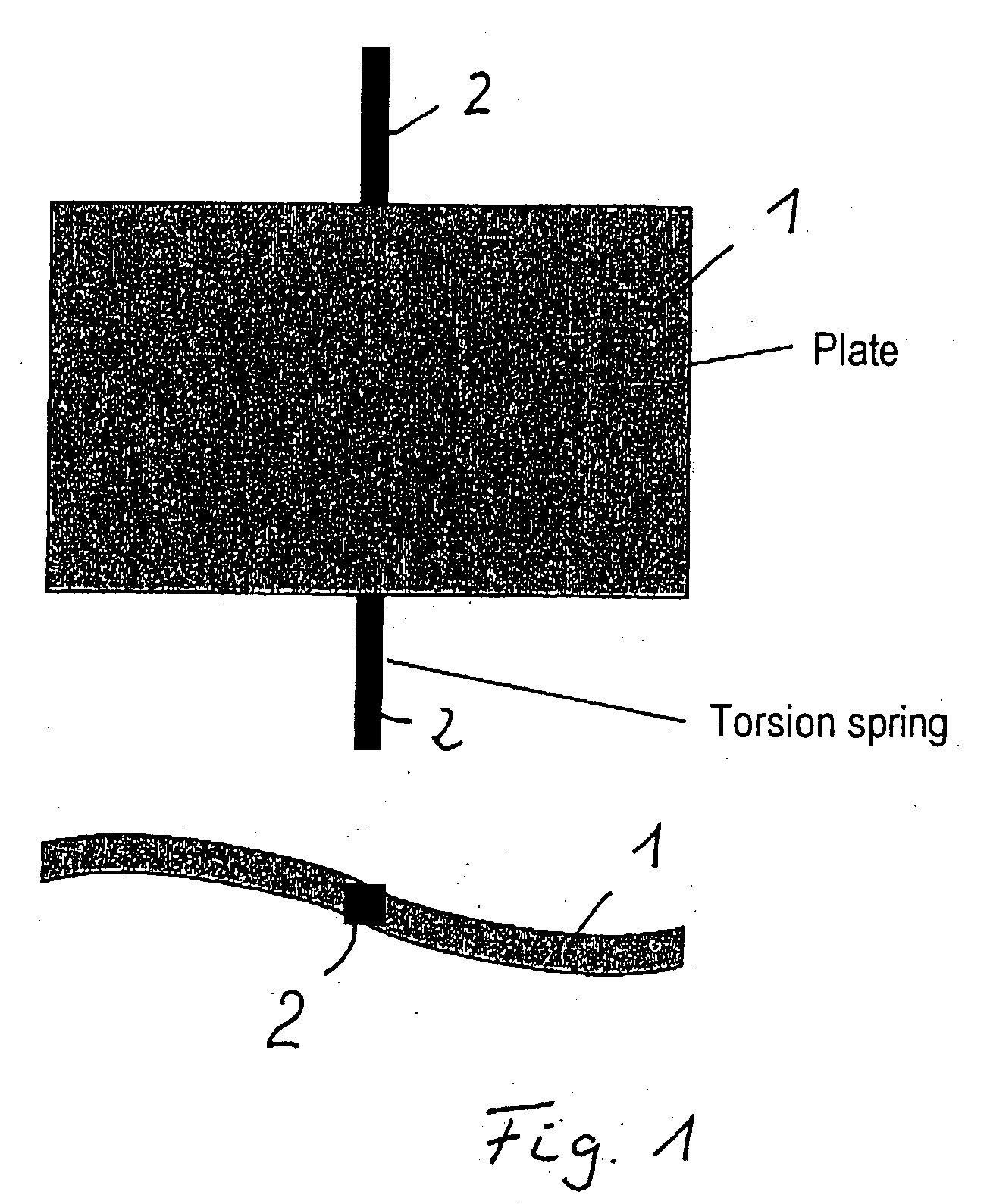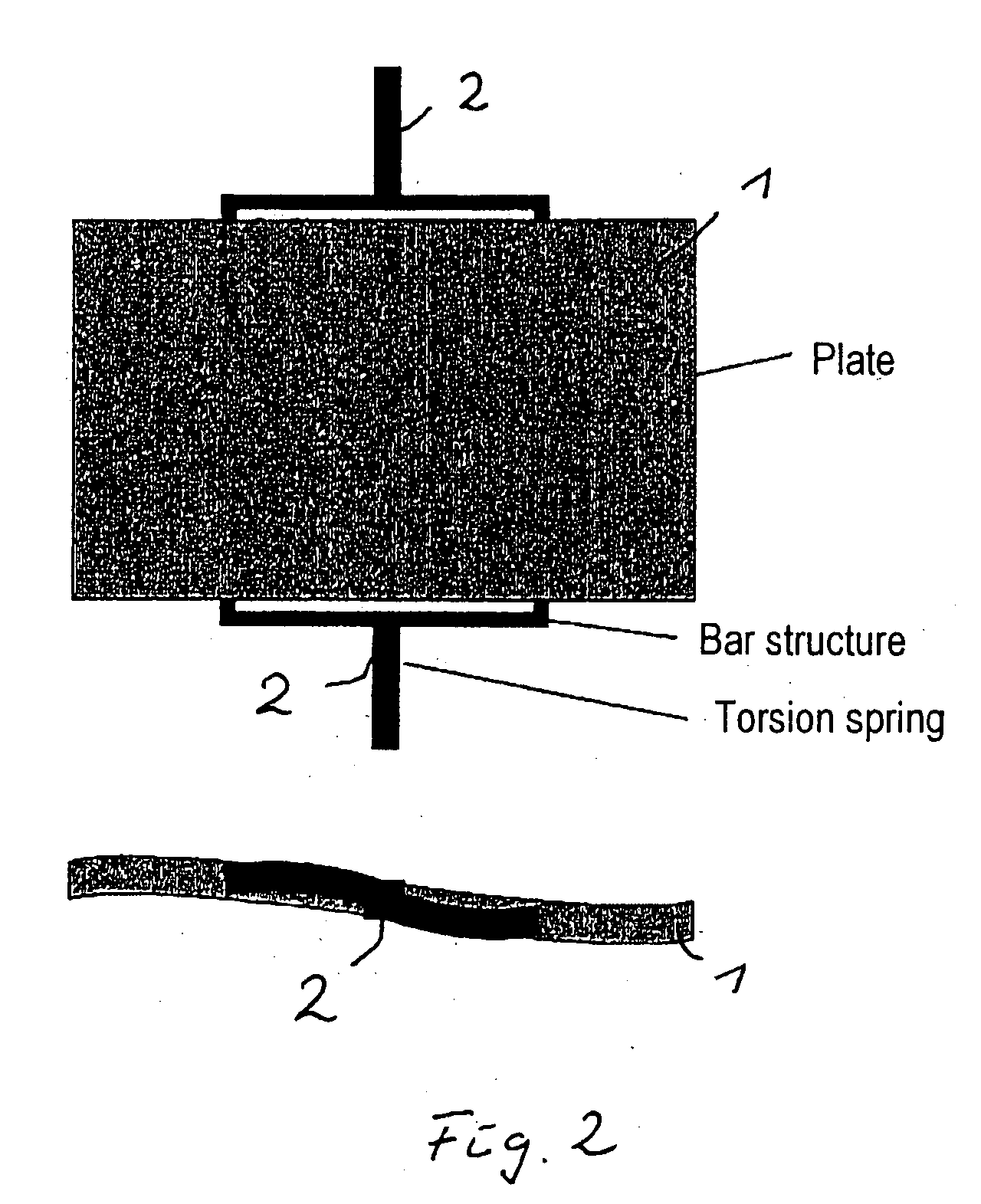Micromechanical optical element having a reflective surface as well as its use
a micromechanical and optical element technology, applied in the field of micromechanical optical elements having a reflective surface, can solve the problems of undesirable influence on the reflection behaviour, need to increase at least the force, and the reflective surface deformation, so as to achieve a significant reduction of the overall torque and the dynamic deformation
- Summary
- Abstract
- Description
- Claims
- Application Information
AI Technical Summary
Benefits of technology
Problems solved by technology
Method used
Image
Examples
Embodiment Construction
[0027] In the examples according to the prior art shown in FIGS. 1 and 2, in the same way as the example according to the invention which is shown in FIG. 3, the lower illustration shows the respective dynamic deformation of an element 1 which can be deflected by pivoting.
[0028] In the case of the example according to the invention shown in FIG. 3, five spring elements 2 are in each case provided on the two mutually opposite sides of an element 1 which can be deflected, in this case with a rectangular shape. A spring element 2 arranged centrally is arranged on the axis of rotation, about which the element 1 can be pivoted backwards and forwards within a predeterminable angle range. This is in the form of a pure torsion spring and in each case acts on the element 1 at only one point.
[0029] Each of the other four spring elements 2 then always acts on the element 1 at in each case two points at appropriate distances and with appropriate lever arms, while maintaining symmetrical relat...
PUM
 Login to view more
Login to view more Abstract
Description
Claims
Application Information
 Login to view more
Login to view more - R&D Engineer
- R&D Manager
- IP Professional
- Industry Leading Data Capabilities
- Powerful AI technology
- Patent DNA Extraction
Browse by: Latest US Patents, China's latest patents, Technical Efficacy Thesaurus, Application Domain, Technology Topic.
© 2024 PatSnap. All rights reserved.Legal|Privacy policy|Modern Slavery Act Transparency Statement|Sitemap



